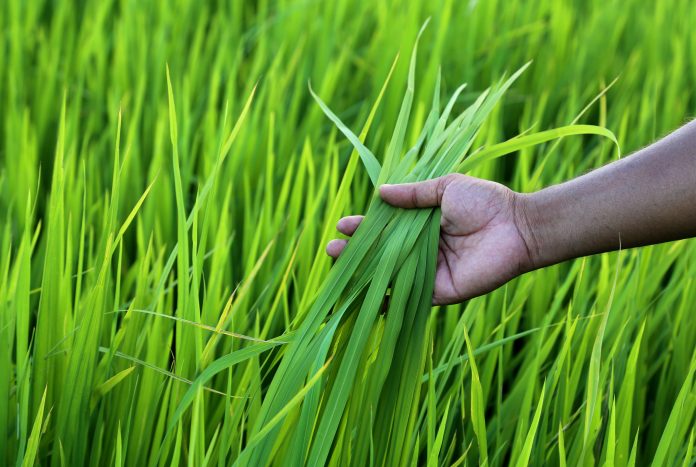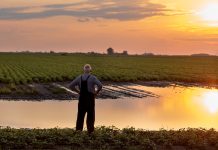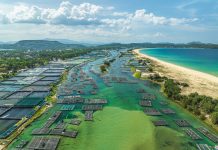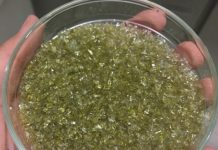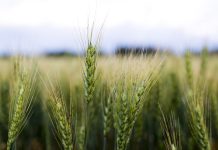Lydia Holmes, Director of Sustainability USA Rice Federation argues that rice farmers in America take pride in looking after the land for future generations
When you think of American agriculture, rice might not be the first crop that springs to mind. However, the United States is a leading exporter of rice, accounting for more than 10% of the annual volume of global rice trade.
Rice is primarily grown on family farms across six U.S. states: Arkansas, California, Louisiana, Mississippi, Missouri, and Texas, using sustainable practices that have led to increased crop yields as well as environmental benefits. Over the past 36 years, thanks to new practices and technical innovations, the U.S. rice industry has improved land use efficiency by 39%, reduced soil erosion by 28% and decreased water use by 52%. It has also reduced energy use by 34% while cutting greenhouse gas emissions by 41%. And as part of its commitment to continuous improvement, it has set ambitious targets for 2030.
Land use and soil conservation
Rice farming has the lowest soil erosion on a per-acre basis of any crop. Due to the unique nature of rice production practices, erosion has not historically been a major problem, but farmers have still found ways to improve their land and water use. Many apply smart land management techniques like precision land levelling, which uses GPS and laser-guided earthmoving equipment to create uniform grades and slopes within fields. This distributes surface drainage and irrigation water more efficiently.
Conservation tillage, in which rice is planted with no or minimal tillage into previous crop residue or a stale seedbed, helps protect the soil from erosion, loss of nutrients, and salinisation. This practice helps to keep organic matter in the ground and improve soil health; it also saves energy and reduces greenhouse gas emissions by requiring fewer tractor passes across the field.
Water use and quality
Flooded rice fields can look like “small lakes,” but the water is just a few inches deep and serves multiple purposes such as preventing soil erosion, creating wildlife habitat, and naturally controlling weeds.
U.S. rice farmers use a variety of practices depending on their farm infrastructure and layout, such as precision technology to track water use and weather conditions, in order to improve their efficiency and reduce overall irrigation.
Other innovative irrigation methods include alternate wetting and drying (AWD), furrow-irrigation, multiple inlet irrigation and tailwater recovery systems. These practices allow farmers to use the exact amount of water their crop needs and to re-use irrigation water where possible. It also allows the soil to dry down several times during the season, which can help reduce greenhouse gas emissions along with water use.
Rice fields are natural filtration systems and water leaving fields is cleaner and clearer than when it went in the field. Farmers also use filter strips, riparian buffers, Integrated Pest Management (IPM), and 4R nutrient management to preserve water quality by reducing run-off.
Energy use
U.S. rice farmers have cut energy use thanks to more fuel-efficient farm equipment and on-farm advances that reduce the amount of water pumped to flood fields and use more precise fertiliser applications that also require fewer passes on the field. At the rice mill, renewable energy is becoming increasingly common, with millers converting waste – rice hulls – into energy, further reducing greenhouse gas emissions. Farmers and millers are also integrating solar technology to help reduce energy costs with the aim of becoming energy neutral.
Biodiversity
U.S rice farmers are very committed to improving vital wildlife habitats.
Working rice lands provide millions of acres of homes and nutrients for migrating waterbirds and other animals. Foraging waterbirds give back to the land as they search for feedstuffs in the grain residue left after harvest, delivering environmental side benefits. These include increasing soil nutrients, straw decomposition, and reducing weed and insect pressure.
The importance of increased biodiversity is not lost on the U.S rice industry and in 2013 it entered into a unique Rice Stewardship Partnership with conservation organisation Ducks Unlimited, to drive continuous improvements in water quality, water quantity and habitat protection.
An ongoing journey
The U.S. rice industry has made impressive progress, but it regards sustainability as an ongoing journey rather than a final destination. That is why it has set itself new ambitious targets for 2030, which range from decreasing water use by 13% to increasing land use efficiency by 10%. U.S. rice farmers care about the land they cultivate and believe in using conservation practices to maintain and improve it for the next generation. For them, sustainability is deeply personal and they will continuously seek new ways to provide a safe, nutritious food supply while protecting the environment.

